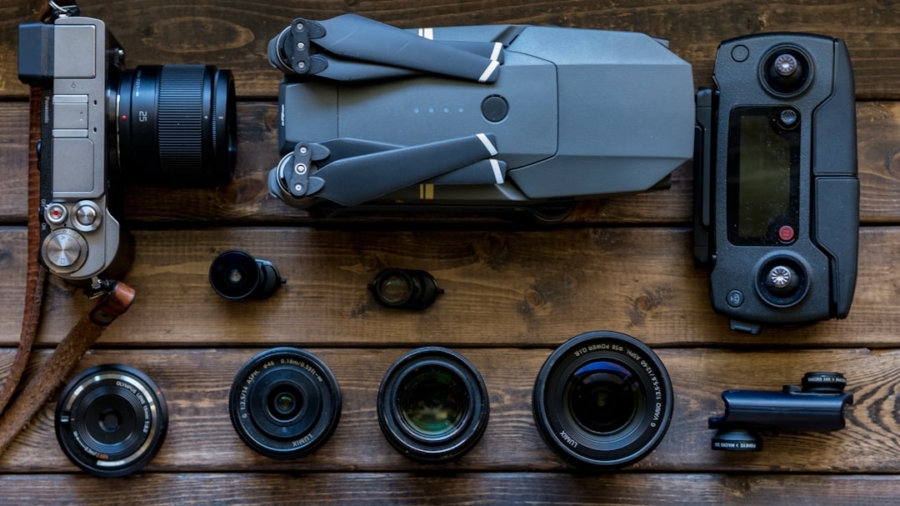The advent of consumer drones has revolutionized the way individuals engage with technology, offering a unique blend of accessibility and innovation. Initially, drones were primarily utilized for military and commercial purposes, but the last decade has seen a significant shift towards consumer applications. Today, these flying machines are not just toys; they are sophisticated devices that can capture stunning aerial photography, assist in agricultural monitoring, and even provide entertainment through racing and recreational flying.
The democratization of drone technology has opened up a world of possibilities for hobbyists, photographers, and tech enthusiasts alike. As the market for consumer drones continues to expand, manufacturers are focusing on enhancing user experience by incorporating advanced features that cater to both novice and experienced pilots. This evolution is characterized by improved control systems, user-friendly designs, and enhanced safety measures.
The growing popularity of drones is also fueled by their integration with smartphone technology, allowing users to operate their devices seamlessly. As we delve deeper into the various aspects of consumer drones, it becomes evident that the industry is not only about flying but also about creating an engaging and safe experience for users.
Key Takeaways
- Consumer drones are becoming increasingly popular for recreational and professional use.
- Improved control and navigation systems make it easier for users to fly drones and capture footage.
- User-friendly design features such as foldable arms and compact size make drones more portable and convenient to use.
- Enhanced safety features like obstacle avoidance and return-to-home functions help prevent accidents and protect the drone.
- Simplified set-up and operation, along with integration with smartphone apps, make it easier for users to get started and control their drones.
Improved Control and Navigation Systems
The Evolution of Consumer Drones: Enhanced Control and Navigation
Precise Positioning and Navigation
Modern consumer drones are equipped with sophisticated GPS technology, enabling precise positioning and navigation. This capability allows users to set waypoints for autonomous flight paths, making it easier to capture specific locations or follow predetermined routes. For instance, a photographer can program a drone to fly over a scenic landscape at a specific altitude and angle, ensuring that they capture the perfect shot without needing to pilot the drone manually throughout the entire process.
Advanced Sensors for Improved Stability
In addition to GPS, many consumer drones now feature advanced sensors that contribute to improved stability and control. These sensors can detect obstacles in real-time, allowing the drone to avoid collisions automatically. This is particularly beneficial for beginners who may not yet have mastered the intricacies of piloting a drone.
Enhanced Safety and Confidence
Drones equipped with obstacle avoidance technology can navigate through complex environments, such as forests or urban areas, with minimal risk of crashing. This level of automation not only enhances safety but also instills confidence in new users who may be apprehensive about flying a drone for the first time.
User-Friendly Design Features
The design of consumer drones has evolved significantly to prioritize user-friendliness. Manufacturers are increasingly focusing on creating intuitive interfaces that simplify the flying experience. Many drones now come with streamlined remote controls that feature ergonomic designs, making them comfortable to hold for extended periods.
Additionally, these controllers often include built-in screens that display essential flight information, such as battery life, altitude, and GPS status, allowing users to monitor their drone’s performance at a glance.
Foldable models have gained popularity due to their portability; they can be easily packed into a backpack or carried in a small case.
This convenience is particularly appealing for travelers who wish to capture breathtaking aerial views during their adventures. Furthermore, many drones now feature one-button takeoff and landing functions, which eliminate the need for complex maneuvers when starting or concluding a flight. Such features make it possible for anyone, regardless of their technical expertise, to enjoy flying a drone without feeling overwhelmed by its operation.
Enhanced Safety Features
Safety is a paramount concern in the realm of consumer drones, and manufacturers have responded by integrating a variety of enhanced safety features into their designs. One notable advancement is the implementation of geofencing technology, which restricts drone flight in certain areas deemed sensitive or hazardous, such as airports or military installations. This feature helps prevent unauthorized flights in restricted airspace and promotes responsible drone usage among consumers.
In addition to geofencing, many modern drones are equipped with return-to-home (RTH) functionality. This feature automatically directs the drone back to its takeoff point if it loses connection with the remote control or if the battery level becomes critically low. Such safety measures are invaluable for preventing loss or damage to the drone, especially in situations where users may be distracted or unfamiliar with their surroundings.
For instance, if a pilot inadvertently flies their drone out of range while capturing footage at a scenic overlook, the RTH function ensures that the drone safely returns without requiring manual intervention.
Simplified Set-Up and Operation
The process of setting up and operating consumer drones has become increasingly straightforward, catering to users who may not possess extensive technical knowledge. Many drones now come pre-assembled or require minimal assembly upon purchase, allowing users to get started quickly without needing specialized tools or expertise. This ease of setup is complemented by comprehensive user manuals and online tutorials that guide users through the initial configuration process.
Once set up, operating a consumer drone has been simplified through intuitive controls and automated flight modes. Many models offer features such as follow-me mode, where the drone autonomously tracks and follows a designated subject—ideal for capturing action shots during outdoor activities like biking or hiking. Additionally, some drones include pre-programmed flight patterns that allow users to execute complex maneuvers with just a few taps on their smartphone or remote control.
This level of automation not only enhances the user experience but also encourages creativity by enabling users to focus on capturing stunning visuals rather than worrying about piloting techniques.
Integration with Smartphone Apps
The integration of consumer drones with smartphone applications has transformed how users interact with their devices. Most modern drones come equipped with companion apps that allow users to control their drones directly from their smartphones or tablets. These apps provide an array of functionalities, including live video streaming from the drone’s camera, access to flight logs, and customizable settings for various flight modes.
Smartphone apps also enhance the overall user experience by offering features such as real-time telemetry data and advanced editing tools for captured footage. For example, users can view live feeds from their drone’s camera while flying, enabling them to adjust angles and framing on-the-fly for optimal photography results.
This seamless integration between drones and smartphones empowers users to share their experiences instantly on social media platforms.
Advanced Camera and Photography Features
The camera capabilities of consumer drones have seen remarkable advancements in recent years, making them an essential tool for photographers and videographers alike. Many modern drones are equipped with high-resolution cameras capable of capturing 4K video and still images with impressive clarity and detail. This level of quality allows users to produce professional-grade content without needing expensive camera equipment.
In addition to high-resolution capabilities, many drones now feature gimbal stabilization systems that ensure smooth video footage even during dynamic movements. Gimbals counteract unwanted vibrations and jerky motions caused by wind or rapid changes in direction, resulting in fluid cinematic shots that enhance the overall viewing experience. For instance, a drone equipped with a three-axis gimbal can capture breathtaking aerial footage of landscapes or events without compromising quality due to shaky camera work.
Moreover, advanced photography features such as HDR (High Dynamic Range) imaging and intelligent shooting modes have become commonplace in consumer drones. HDR imaging allows for better detail retention in both bright and dark areas of an image, while intelligent shooting modes enable users to capture stunning aerial shots with minimal effort. Features like “drone selfies” or “point-of-interest” modes allow users to focus on composition while the drone handles complex flight maneuvers automatically.
Future Trends in User-Friendly Consumer Drones
As technology continues to evolve at an unprecedented pace, the future of user-friendly consumer drones looks promising. One emerging trend is the incorporation of artificial intelligence (AI) into drone systems. AI can enhance various aspects of drone operation, from obstacle detection and avoidance to automated image recognition capabilities that allow drones to identify subjects or landmarks autonomously.
This could lead to even more intuitive flying experiences where users can simply indicate what they want the drone to capture without needing extensive piloting skills. Another trend is the development of hybrid drones capable of both flying and driving on land. These versatile machines could expand the range of applications for consumer drones beyond aerial photography into areas such as search-and-rescue operations or environmental monitoring in hard-to-reach locations.
The ability to transition seamlessly between air and ground could open new avenues for exploration and creativity. Furthermore, as regulations surrounding drone usage become more defined globally, manufacturers will likely focus on creating compliant models that prioritize safety while still delivering exceptional performance. This could include enhanced geofencing capabilities that adapt based on local laws or improved communication systems that allow drones to interact with other air traffic more effectively.
In conclusion, the landscape of consumer drones is rapidly evolving towards greater accessibility and user-friendliness. With advancements in control systems, design features, safety measures, smartphone integration, camera technology, and future innovations on the horizon, it is clear that these devices will continue to captivate enthusiasts and professionals alike for years to come.
If you are interested in technology that is user-friendly, you may also want to check out




